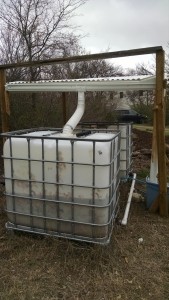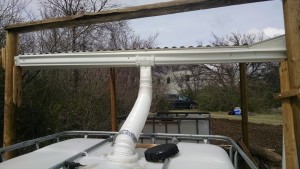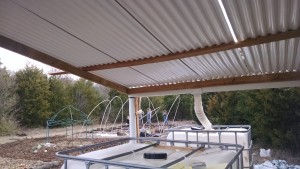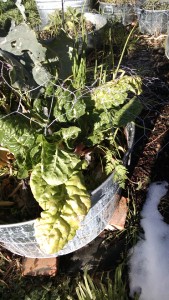In a gardening class this weekend, the discussion turned to growing tomatoes and the prevalence of the tomato hornworm. Truth be told, I have not, in the last two decades seen a hornworm on my tomatoes. Maybe I just don’t see them, but I sure don’t see any leaves eaten either.
Here’s what I do to avoid them (and other pests).
Borage, a lovely purple flowered herb, can be grown with the tomato plants and keeps hornworms away. I also plant marigolds in the vicinity (to ward off root knot nematodes that can devastate tomatoes), and basil. Not only do the tomatoes have company, but I get lovely flowers, cucumber-tasting borage leaves for salads, and fragrant basil.
I also don’t plant tomatoes in the same garden space two years in a row. In fact, I’m on a 3-4 year rotation.
The practice of companion planting can produce more food for the space than just planting recommended spacing of mono-crops.
I’m a big fan of companion planting over and above any pest control benefits. Companion plants are those that help each other, and sometimes even increase yields for each other. Friends helping friends.
A good companion planting with strawberries is spinach. They both like more acidic soil.
Carrots go well, when planted among tomatoes late in the summer/early in the fall, when the tomatoes shade them from the hot sun, yet let them get a start. The carrots use the under-surface growing horizon and are ready to burst forth when the tomatoes are done for the season. Two crops from the same space.
Potatoes and beans (particularly bush beans) go well together. They protect each other from Colorado potato beetle and Mexican bean beetle.
Okra and peppers do well together, especially if the okra is used as a windbreak for the peppers.
And if you’re growing lettuce and have problems with rabbits helping themselves, I’m told that onions planted with the lettuce will repel the rabbits.
[NOTE: A good read for companion planting is Carrots Love Tomatoes. Look for the full citation under the Resources tab on this website.]
And while I’m on the subject….how about planting lots of rosemary? It helps repel mosquitoes! I advocate rosemary plantings around the deck or patio.
Other repellents or remedies include pepper flakes and orange peels.
To repel pests eating plants (e.g., basil, sage, peppers), boil red pepper flakes in water. Strain into a spray bottle and add about 1-2 tsp of dish soap (preferably 7th Generation or Ivory Soap). Shake and spray on the plant leaves.
For fire ants, boil orange peels in water with some whole cloves. Strain into a jar and add the same amount of water. Pour on the mound. May have to repeat after about a week. It makes the ants go away.





